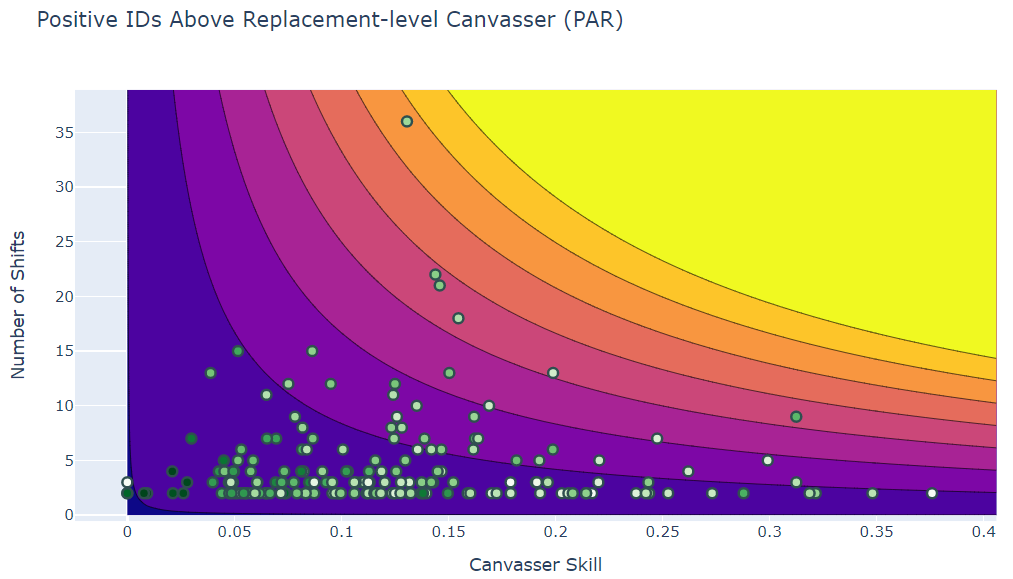Performance Metrics for Canvassers in Campaigns
Common ways of assessing how productive canvassers have been when door knocking are:
- Counting the number of shifts they've canvassed,
- Measuring the canvasser's Contact Rate: how often they get people to answer the door,
- and Persuasion rate: the rate at which they get someone to committ to supporting their candidate.
However, we can take all three of these and combine them into a single metric: Positive IDs Above Replacement-level Canvasser, or PAR. This just means we take the total number of positive IDs they've gotten, and subtract what a "Replacement-level" Canvasser would have done in the same situations, i.e. a fresh canvasser with no experience.

PAR Contour Visualization¶
Below you can see a Contour Plot visualization of PAR in terms of number of shifts, and "Canvasser Skill", which is the product of contact rate and persuasion rate. Yellow indicates higher PAR, while navy indicates lower. You can see that to have a high PAR, you need to have both completed a large number of shifts, and have good "Canvasser Skill."
Each canvasser is represented by a point overlayed on the contour plot, colored in by their Persuasion rate in green. Scale for Persuasion rate is on the right. Hover for details, or click on the screenshot above for a full screen plot.
from IPython.display import IFrame
IFrame(src='canvass_par.html', width=960, height=540)
What to do with this information?¶
- Retain good canvassers: Make sure individuals with high canvassers skill with few shifts come back. These people are on the bottom right.
- Help out the newer canvassers: Canvassing is hard and it really helps to hit the doors with someone experienced. The group of people on the bottom left could benefit from a good canvassing partner.
